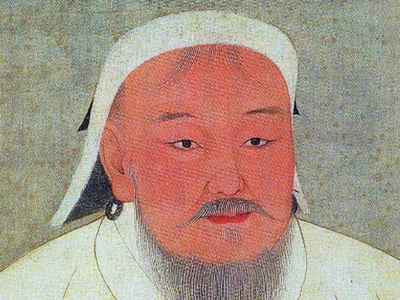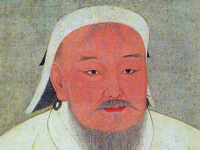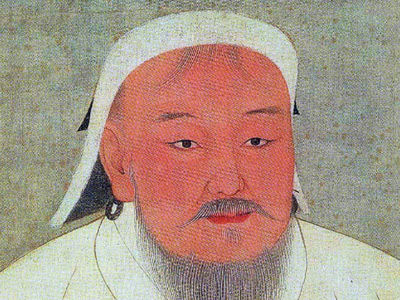Genghis Khan (1162-1227)

Sole ruler of the Mongol plains (1206)
The part of the Merkit clan that sided with the Naimans were defeated by Subutai, who was by then a member of Temüjin's personal guard and later became one of Genghis Khan's most successful commanders. The Naimans' defeat left Temüjin as the sole ruler of the Mongol steppe – all the prominent confederations fell or united under his Mongol confederation.
Accounts of Genghis Khan's life are marked by claims of a series of betrayals and conspiracies. These include rifts with his early allies such as Jamukha (who also wanted to be a ruler of Mongol tribes) and Wang Khan (his and his father's ally), his son Jochi, and problems with the most important shaman, who allegedly tried to drive a wedge between him and his loyal brother Khasar. His military strategies showed a deep interest in gathering intelligence and understanding the motivations of his rivals, exemplified by his extensive spy network and Yam route systems. He seemed to be a quick student, adopting new technologies and ideas that he encountered, such as siege warfare from the Chinese. He was also ruthless, demonstrated by his tactic of measuring against the linchpin, used against the tribes led by Jamukha.
As a result, by 1206, Temüjin had managed to unite or subdue the Merkits, Naimans, Mongols, Keraites, Tatars, Uyghurs, and other disparate smaller tribes under his rule. This was a monumental feat. It resulted in peace between previously warring tribes, and a single political and military force. The union became known as the Mongols. At a Khuruldai, a council of Mongol chiefs, Temüjin was acknowledged as Khan of the consolidated tribes and took the new title "Genghis Khan". The title Khagan was conferred posthumously by his son and successor Ögedei who took the title for himself (as he was also to be posthumously declared the founder of the Yuan dynasty).
HISTORY

RESOURCES
This article uses material from the Wikipedia article "Genghis Khan (1162-1227)", which is released under the Creative Commons Attribution-Share-Alike License 3.0.
© Stories Preschool. All Rights Reserved.








